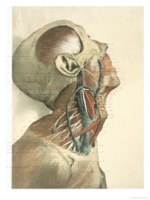Difference between revisions of "Dissection"
(Created page with 'File:lighterstill.jpgright|frame ==Origin== Latin ''dissectus'', past participle of ''dissecare'' to cut apart, from ''dis''- + ''secare'' to cut...') |
m (Text replacement - "http://" to "https://") |
||
| Line 3: | Line 3: | ||
==Origin== | ==Origin== | ||
[[Latin]] ''dissectus'', past participle of ''dissecare'' to cut apart, from ''dis''- + ''secare'' to cut | [[Latin]] ''dissectus'', past participle of ''dissecare'' to cut apart, from ''dis''- + ''secare'' to cut | ||
| − | *[ | + | *[https://en.wikipedia.org/wiki/16th_century 1598] |
==Definitions== | ==Definitions== | ||
*1: to [[separate]] into [[pieces]] : [[expose]] the several parts of (as an [[animal]]) for scientific [[examination]] | *1: to [[separate]] into [[pieces]] : [[expose]] the several parts of (as an [[animal]]) for scientific [[examination]] | ||
| Line 10: | Line 10: | ||
'''Dissection''' (also called ''anatomization'') is usually the [[process]] of disassembling and [[observing]] something to determine its internal [[structure]] and as an aid to [[discerning]] the [[functions]] and [[relationships]] of its components. | '''Dissection''' (also called ''anatomization'') is usually the [[process]] of disassembling and [[observing]] something to determine its internal [[structure]] and as an aid to [[discerning]] the [[functions]] and [[relationships]] of its components. | ||
| − | Dissection is usually applied to the [[examination]] of [[plants]] and [[animals]]. The term is also used in relation to [[mechanisms]], [[computer]] programs, [[written]] materials, etc., as a synonym for terms such as reverse engineering or [ | + | Dissection is usually applied to the [[examination]] of [[plants]] and [[animals]]. The term is also used in relation to [[mechanisms]], [[computer]] programs, [[written]] materials, etc., as a synonym for terms such as reverse engineering or [https://en.wikipedia.org/wiki/Deconstruction literary deconstruction]. Dissection is usually performed by [[students]] in courses of [[biology]], [[botany]] and [https://en.wikipedia.org/wiki/Anatomy anatomy] and in association with medical and arts studies. |
| − | [ | + | [https://en.wikipedia.org/wiki/Vivisection Vivisection] refers to the dissection of a living animal, often for the [[purposes]] of [[physiological]] investigation and nowadays always under heavy sedation. However, the term is no longer widely used, in part because more [[sophisticated]] [[techniques]] have superseded it for many applications. The term is now almost entirely used in a pejorative sense by those who oppose animal testing of any sort. |
| − | Dissection is often performed as a part of determining a [[cause]] of [[death]] in [ | + | Dissection is often performed as a part of determining a [[cause]] of [[death]] in [https://en.wikipedia.org/wiki/Autopsy autopsy] (on [[humans]]) and [https://en.wikipedia.org/wiki/Necropsy necropsy] (on animals) and is an intrinsic part of forensic medicine, such as would be practiced by a [https://en.wikipedia.org/wiki/Coroner coroner]. [https://en.wikipedia.org/wiki/Dissection] |
[[Category: Biology]] | [[Category: Biology]] | ||
Latest revision as of 00:16, 13 December 2020
Origin
Latin dissectus, past participle of dissecare to cut apart, from dis- + secare to cut
Definitions
- 1: to separate into pieces : expose the several parts of (as an animal) for scientific examination
- 2: to analyze and interpret minutely <dissect a problem>
Description
Dissection (also called anatomization) is usually the process of disassembling and observing something to determine its internal structure and as an aid to discerning the functions and relationships of its components.
Dissection is usually applied to the examination of plants and animals. The term is also used in relation to mechanisms, computer programs, written materials, etc., as a synonym for terms such as reverse engineering or literary deconstruction. Dissection is usually performed by students in courses of biology, botany and anatomy and in association with medical and arts studies.
Vivisection refers to the dissection of a living animal, often for the purposes of physiological investigation and nowadays always under heavy sedation. However, the term is no longer widely used, in part because more sophisticated techniques have superseded it for many applications. The term is now almost entirely used in a pejorative sense by those who oppose animal testing of any sort.
Dissection is often performed as a part of determining a cause of death in autopsy (on humans) and necropsy (on animals) and is an intrinsic part of forensic medicine, such as would be practiced by a coroner. [1]
